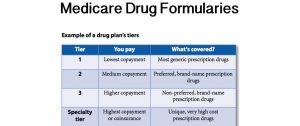UnitedHealthcare is a leading health insurance company in the United States that provides a wide range of health insurance products and services to millions of people across the country. One of the key features of UnitedHealthcare’s health plans is the 3-tier formulary, which is designed to provide members with access to affordable prescription drugs while also promoting the use of clinically effective medications.
In this article, we will take a closer look at UnitedHealthcare’s 3-tier formulary, its benefits, and how it works.Early Finder
What is a Formulary?
Before we dive into the details of UnitedHealthcare’s 3-tier formulary, it is important to understand what a formulary is. A formulary is a list of prescription drugs that a health plan covers. It is usually divided into different tiers or levels, each of which has a different cost-sharing structure.
A formulary is designed to help health plans and their members manage the cost of prescription drugs while also ensuring that members have access to safe and effective medications.

Read Also: How to get reimbursed from United Healthcare
What is UnitedHealthcare’s 3-Tier Formulary?
UnitedHealthcare’s 3-tier formulary is a list of prescription drugs that are covered under the company’s health plans. The formulary is divided into three tiers, each of which has a different cost-sharing structure.
Tier 1: Preferred Generics
The first tier of UnitedHealthcare’s 3-tier formulary is the preferred generics tier. This tier includes generic drugs that are considered to be the most cost-effective and clinically effective medications. These drugs typically have the lowest out-of-pocket costs for members.
Tier 2: Non-Preferred Generics and Preferred Brand Name Drugs
The second tier of UnitedHealthcare’s 3-tier formulary includes non-preferred generics and preferred brand name drugs. These drugs are generally less expensive than non-preferred brand name drugs, but more expensive than the drugs in tier 1. Members will typically pay a higher co-pay or coinsurance for drugs in this tier.
Tier 3: Non-Preferred Brand Name Drugs and Specialty Drugs
The third tier of UnitedHealthcare’s 3-tier formulary includes non-preferred brand name drugs and specialty drugs. These drugs are generally the most expensive and are typically used to treat complex or rare medical conditions. Members will typically pay the highest co-pay or coinsurance for drugs in this tier.Unitedhealthcare 3 tier formulary
Read Also: Top 10 Stores that Accept United Healthcare OTC Card
What are the Benefits of UnitedHealthcare’s 3-Tier Formulary?
There are several benefits to UnitedHealthcare’s 3-tier formulary. Here are some of the key benefits:
-
Cost Savings
One of the main benefits of UnitedHealthcare’s 3-tier formulary is cost savings. By dividing prescription drugs into different tiers, members can choose lower-cost drugs whenever possible, which can help them save money on their out-of-pocket costs.
-
Clinical Effectiveness
UnitedHealthcare’s 3-tier formulary is designed to promote the use of clinically effective medications. By placing the most cost-effective and clinically effective medications in tier 1, members are encouraged to use these drugs whenever possible.
Read Also: 8 Things You Can Buy with UnitedHealthcare OTC Card
-
Access to Medications
UnitedHealthcare’s 3-tier formulary ensures that members have access to a wide range of prescription drugs. By covering a broad range of medications, members can find the drugs they need to manage their health conditions.
-
Predictable Costs
The 3-tier formulary provides members with predictable costs for their prescription drugs. By knowing what tier a drug is in, members can predict their out-of-pocket costs and plan accordingly.
How Does UnitedHealthcare’s 3-Tier Formulary Work?
UnitedHealthcare’s 3-tier formulary works by dividing prescription drugs into three tiers based on their cost and clinical effectiveness. Members are encouraged to choose drugs in the lowest tier whenever possible to save money on their out-of-pocket costs.
Read Also: UnitedHealthcare Insurance: Pros and Cons
Here’s how the 3-tier formulary works in practice:
Step 1: Your doctor prescribes a medication for you.
Step 2: Check the formulary to see what tier the medication is in.
Step 3: If the medication is in tier 1, you can expect to pay the lowest co-pay or coinsurance. If the medication is in tier 2, you will pay a higher co-pay or coinsurance. If the medication is in tier 3, you will pay the highest co-pay or coinsurance.
Step 4: If the medication is not covered by the formulary, you will need to pay the full cost of the medication.
It’s important to note that UnitedHealthcare’s 3-tier formulary is subject to change. The company may add or remove drugs from the formulary at any time, depending on factors such as drug availability, cost, and clinical effectiveness.
UnitedHealthcare also offers a variety of tools and resources to help members navigate the 3-tier formulary. These include online tools that allow members to search for medications, compare prices, and find lower-cost alternatives.
In addition, UnitedHealthcare has a team of pharmacists and other healthcare professionals who can provide guidance and support to members who have questions or concerns about their medications.
Read Also: 6 Steps to use UnitedHealthcare OTC card
Conclusion
UnitedHealthcare’s 3-tier formulary is a valuable tool for members who are looking to manage their prescription drug costs while also ensuring that they have access to safe and effective medications. By dividing prescription drugs into different tiers based on their cost and clinical effectiveness, members can choose lower-cost drugs whenever possible, while still having access to the medications they need to manage their health conditions.
If you’re a UnitedHealthcare member, it’s important to familiarize yourself with the 3-tier formulary and to use the tools and resources available to help you make informed decisions about your medications. With the right information and support, you can make the most of your UnitedHealthcare health plan and manage your prescription drug costs with confidence.
Share This Post:





